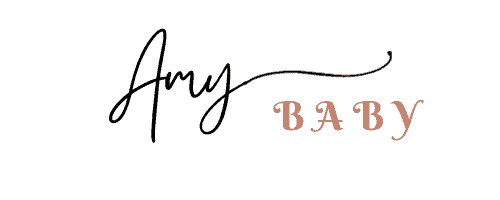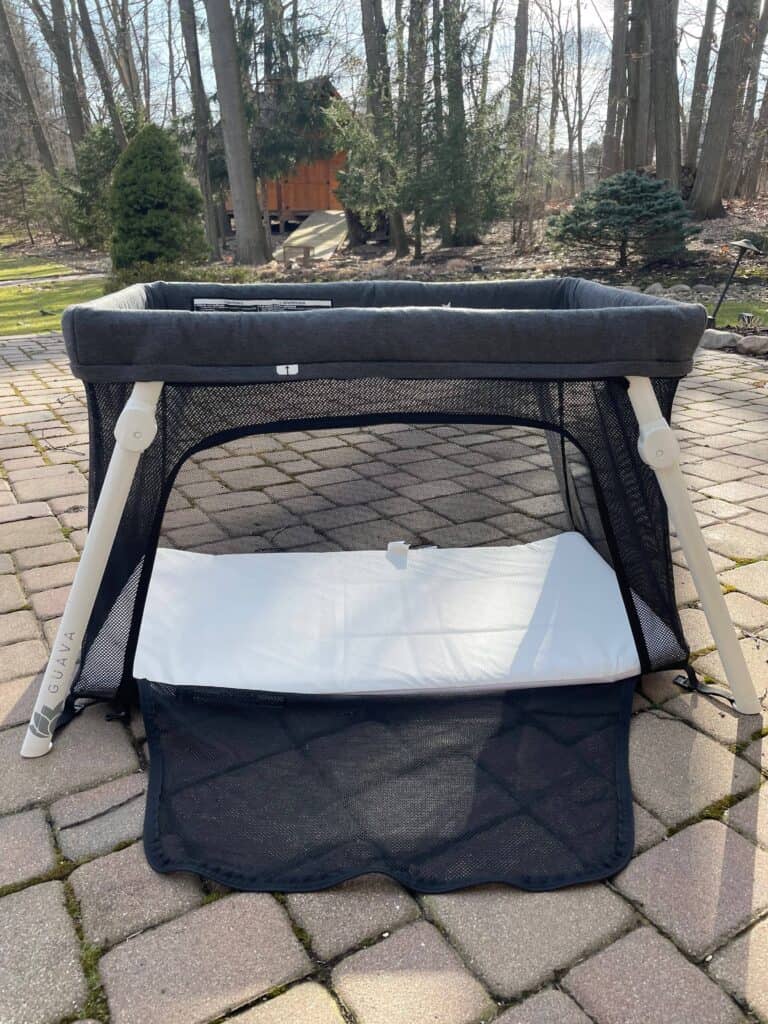
Why organic baby formulas? I didn’t feel the need to look into the best organic baby formulas when I first had my baby girl. The truth is I was clueless when it came to choosing baby formula.
The hospital gave me a bunch of free samples to take home (yes please). My baby seemed fine with the formula, there was really no point in making a change. So whenever I supplemented my breastmilk, I continued to feed her using the same formula.
But then, in February 2022, Similac had a giant recall on their formula. My daughter had a whole pack of the recalled formula — yikes! I couldn’t believe it.
She ended up being fine, probably because she was 9 months old at the time — the recall was said to have had a more serious impact on infants.
That’s when I started regretting not doing my homework on baby formulas. The mom guilt set it. This should have been the most important topic to research for my precious baby, the nutrients she’s eating, and I didn’t do it.
I wish all baby formulas were made with clean healthy ingredients, that way I wouldn’t have to travel down rabbit holes digging for information, but the truth is they are not.
I mean, have you ever paid attention to the ingredients in baby formula? I can’t understand any of it!
I tried looking up each ingredient, diligently studying up on the meanings behind these long scientific components. I now wish I never did that as it got me even more lost.
Lucky me, my coworker’s wife is a pharmacist. She’s very particular about ingredients in all foods her family consumes and also happens to have a baby that’s close to my baby girl’s age.
She gave me some great recommendations based on ingredients. On top of that, I found Dr. Young who is a mom of two and also an infant nutrition researcher.
Dr. Young uses plain English to help us mere mortal mommies understand baby formulas. If you need more in-depth and detailed information on baby formula and baby food, I highly recommend visiting her website: Baby Formula Expert.
What are the best organic baby formulas
- Kendamil Stage 1 & 2
- Holle Bio Pre or 1
- HiPP Dutch Stage 1 & 2
- Loulouka Stage 1 & 2
- Lebenswert Stage 1 & 2
- Bobbie Organic Infant Formula
Kendamil Stage 1 & 2

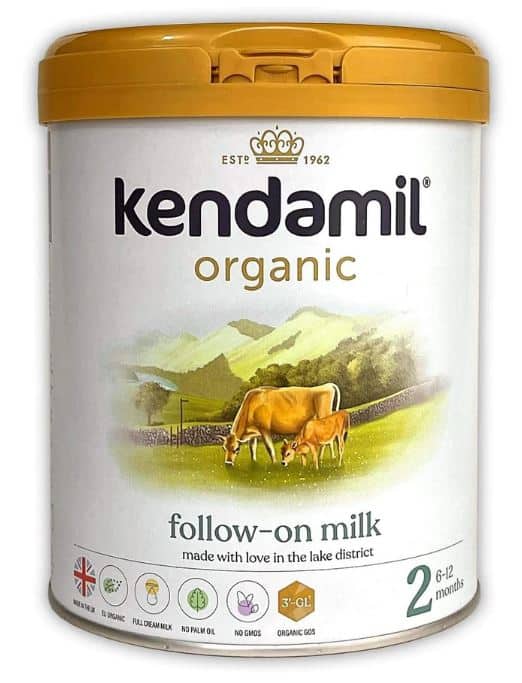
My 8-month-old baby has been taking Kendamil. He’s striving with it. Just like Prince Louis. You haven’t heard?
The Princess of Wales was feeding Kendamil to Prince Louis! Isn’t that a good enough reason for you to pick Kendamil?
I’m kidding, it really all depends on your baby’s needs. Let’s check out why it makes Kendamil stand out.
- It is one of the few formulas in the market that uses whole milk from organically grass-fed cows.
- Existed since 1962 in England. Made with the freshest dairy from family farms in the famous Lake District (a UNESCO World Heritage site and home to Peter Rabbit and Postman Pat) and other formula ingredients from local suppliers in Somerset, Kent, and Yorkshire. All ingredients are traceable during every step of the process.
- No palm oil, no soy oil. (It’s hard to find a formula that is both palm and soy oil-free)
- It tastes great, very much like breastmilk. (Yes, I tasted it. And I think the full fat made the formula taste creamy.)
- No smell at all.
- Intact protein (full-sized protein). If your baby has an allergy, this might not be a good option.
- Stage 1 (0-6 months) is 60% to 40% Whey to Casein ratio. Stage 2 (7-12 months) is 50% to 50% Whey to Casein ratio. This is for the baby to transition to cow milk after 1-year-old. Cow milk has a 20% to 80% Whey to Casein ratio.
Where to Buy:
Holle Bio Pre or 1
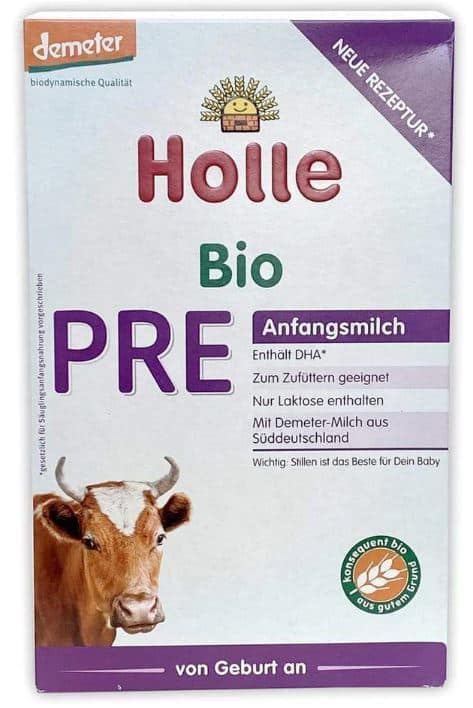
Holle Bio Pre is another great option for whole milk-based formulas. Holle is one of the most popular European formulas in the U.S. It was founded in 1933, based in Switzerland.
This might be the cleanest formula out there because of less additives. Holle Bio Pre is for infants from 0 to 6 months. There is another option from this same brand for infants from 0 to 6 months.
That is Holle Bio 1. The differences between these two are whole milk vs. skimmed milk and maltodextrin.
Holle Bio 1 is skimmed milk-based. Holle Bio 1 uses maltodextrin, whereas Holle Bio Pre does not. That means Holle Bio 1 is less sweet.
Because maltodextrin is less processed than corn sugar (commonly added to baby formulas).
- Demeter certified (from biodynamic farming). That means a step up from organic certification. Treating the whole farm as a living organism, not just the cows, and keeping the whole ecosystem natural and healthy.
- Whole milk-based formula from very happy healthy cows.
- True soy-free.
- Iron is on the low side (0.5mg)
- It comes with a box packing which makes scooping formula powder a little hard.
Where to buy:
HiPP Dutch Stage 1 & 2
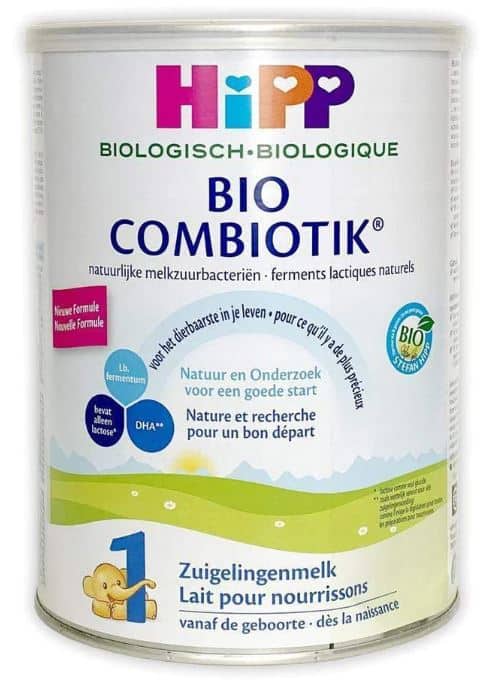
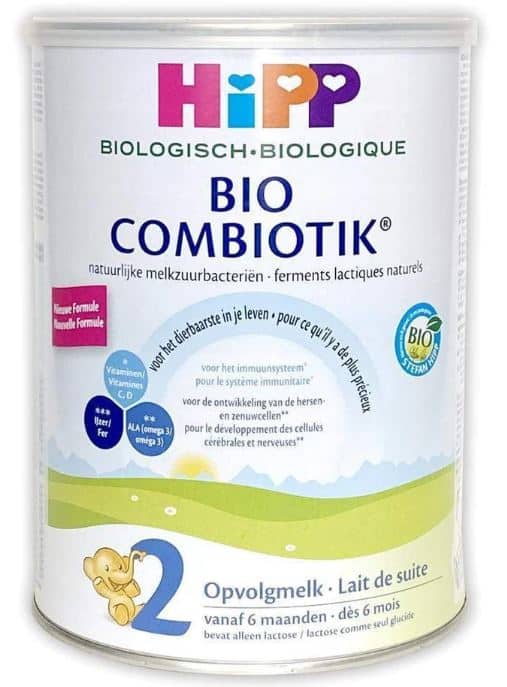
My daughter was fed the HiPP Dutch formula. I have to say Kendamil tastes better than HiPP, but HiPP Dutch still tastes pretty good. It doesn’t have any smell either. HiPP was founded in 1899 and has a long history.
HiPP is a pioneer in both organic farming and manufacturing. It is headquartered in Germany, with additional manufacturers in the Netherlands and the United Kingdom.
Because of that, there are 4 versions of its baby formulas. The ingredients of each version can be a little different.
- Step up from organic baby formula. It goes above and beyond the standard of European baby formula.
- Skimmed milk-based.
- Most of their baby formula’s whey-to-casein ratio is 40% to 60%.
- No non-lactose-based sugar, which is great!
- Use fish oil as their source of DHA and ARA.
- Note there’s palm oil in their baby formulas. But if your baby has no digestion issues, it should be fine.
- It does have both prebiotics and probiotics.
Where to Buy
Loulouka Stage 1 & 2
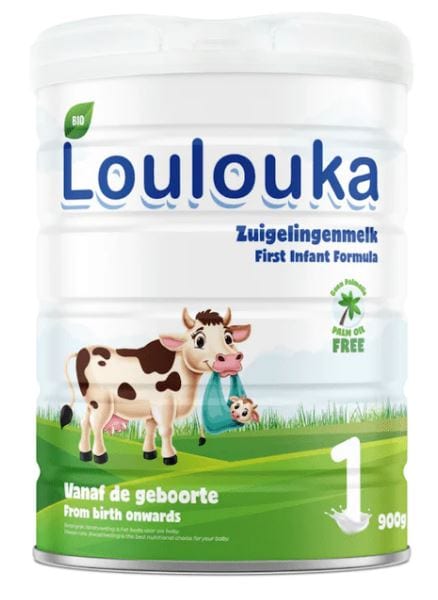
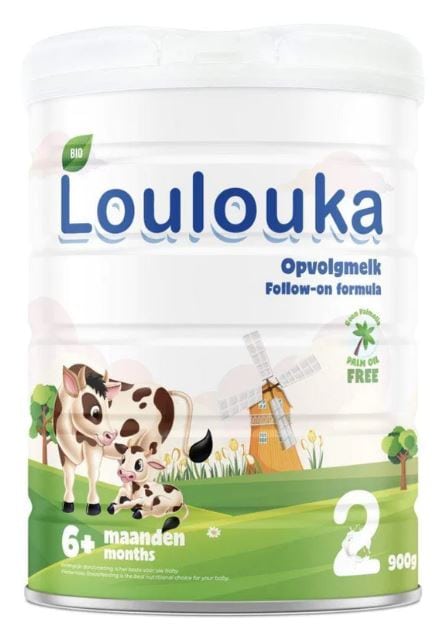
Loulouka is one of the newest baby formula companies, founded in 2016. What makes Loulouka special is their cows and ingredients are all sourced from Switzerland. This country is famous for its vast Alpine pastures.
It’s very easy to spot cows and goats in the rural areas. Organic farming is common there. They also have some of the strictest animal welfare laws.
Loulouka cows are living their best lives in the most beautiful mountains and eating the healthiest food, producing the best quality of milk.
- The iron amount is among the high-end of most European baby formulas.
- Unfortunately, Loulouka has switched to skimmed milk. That’s a waste of their supreme milk quality.
- No soy and no palm oil
Where to Buy
Lebenswert Stage 1 & 2
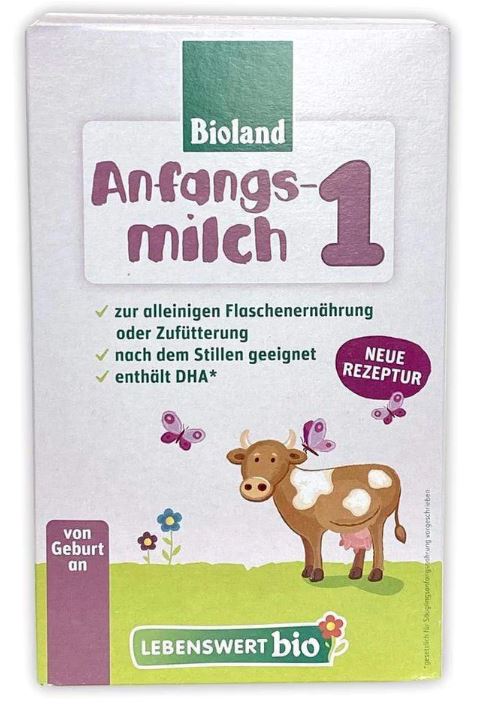
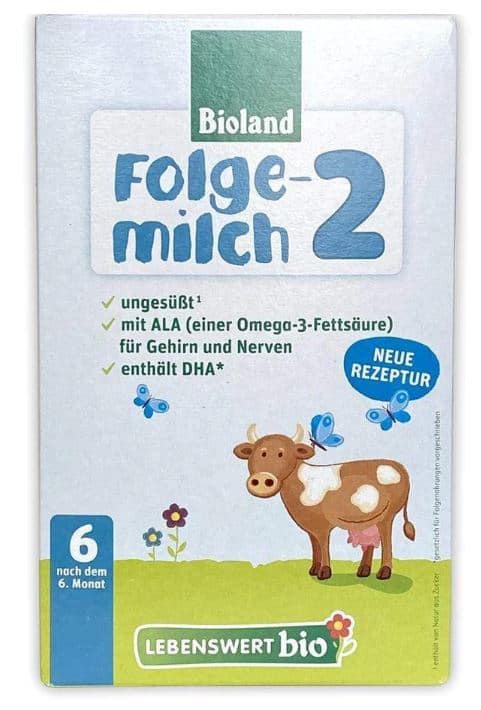
Does Lebenswert packaging look familiar? Yes, because it is a sister company to Holle. Lebemswert follows the same standard as Holle.
The only difference is Lebenswert is allergy-friendly. Its formula is gluten-free. It is also from soy, nuts, and wheat.
- Skimmed Milk Based.
- One of the most allergy-friendly options for sensitive babies
- No prebiotics, no probiotics. To maintain a short, clean list of ingredients, Lebenswert doesn’t add those extras.
- It comes with a box packing which makes scooping formula powder a little hard.
Where to Buy
Bobbie Organic Infant Formula
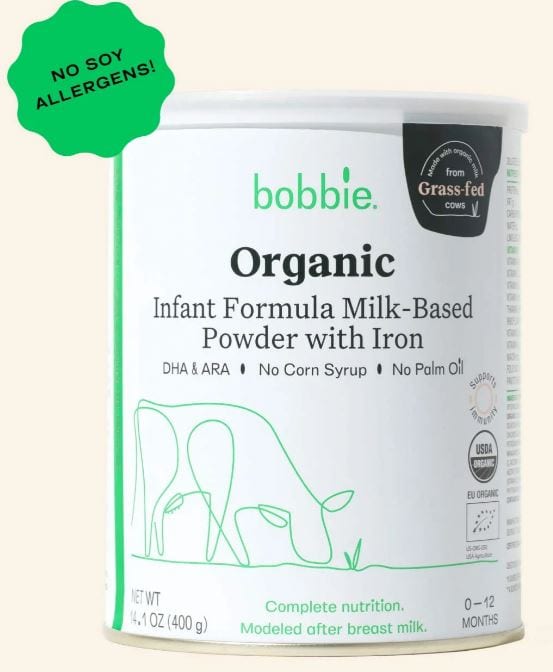
Bobbie is a newly founded (2018) U.S. organic baby formula company. The standard for what qualifies as organic in America and Europe is actually quite different. Two different countries with two distinct regulations.
European baby formulas are not FDA-approved. What is unique about the Bobbie formula is that they are made in the U.S. and FDA approved, but with a European-style recipe.
- There is only one stage for babies 0 to 12 months. (All U.S. baby formulas are like this)
- High level of Iron
- 60% to 40% Whey to Casein ratio.
- No Palm oil.
- High level of DHA
Where to Buy
What are the key ingredients to look for when shopping for the best baby formulas?
The basics (the bulk of where the calories come from)
- Protein:
- Most people start with cow’s milk. Goat’s milk is another option. Avoid soy protein because it is heavily processed.
- Whey to Casein ratio. Look for higher weights of Whey. That means easy digestion for your baby. Casein and Whey are the 2 groups of protein in both cow and breast milk, as well as other mammals. The ratio of Whey and Casein in breastmilk changes throughout breastfeeding. But overall, breast milk contains more whey than casein. Whereas cow milk is the opposite. Whey digests quickly, and casein digests slowly. That’s why breastmilk is easy for infants to digest, typically giving less chance of poor reactions. So look for added whey in baby formulas to mimic breastmilk.
- The smaller size of the protein. Look for partially hydrolyzed protein for newborns or babies with sensitive stomachs. Hydrolysis breaks protein into small pieces – meaning easy to digest. The larger the size of the protein, the harder for the baby to digest. If your baby has a sensitive stomach, look for fully hydrolyzed protein. Note that all U.S. organic baby formulas only have intact (full-sized) protein.
- Fat (Oil):
- Try to avoid palm oil. It absorbs lower fat and calcium which may affect bone density. It can also lead to constipation.
- Look for a high proportion of Coconut oil. Contrary to palm oil, coconut oil is super easy to be absorbed.
- Carbs
- Look for “Lactose”. Lactose is the carbohydrate in breast milk and all babies have the enzyme necessary to digest lactose.
- Try to avoid corn syrup, maltodextrin, glucose syrup, or sucrose (table sugar). No sugar for our babies! If you are interested in why sugar is not good for babies but lactose is good, check out this article from Dr. Young. Don’t worry, it’s very easy to read.
The Extras
- Probiotics and Prebiotics are found in breast milk. Both are good. Some formulas list them as more complicated names. Probiotics – Lactobacillus Reuteri (or L. Reuteri) or Bifidobacterium Lactis (or. L. Lactis). Prebiotics – Galactooligosaccharides or Fructooligosaccharides or Polydextrose.
- DHA and AHA are added to most baby formulas. Probably because they are found in breast milk. However, there are still a few organic baby formulas that don’t include them. The long name for DHA is Crypthecodinium Cohnii oil (or C. Cohnii oil). And the long name for AHA is Mortierella Alpina Oil (or M. Alpina oil).
Whole Milk vs. Skimmed Milk
In short, FAT is the difference between whole milk and skimmed milk. Whole milk keeps the full fat from the milk whereas skimmed milk gets rid of all fat and only leaves proteins.
All the nutrients come from fat, such as all the vitamins, fatty acids (i.e. Omega 3), and cholesterol (a good thing for infants). Skimmed milk-based formula extracts those nutrients and adds them back.
So is whole milk-based formula better than skimmed milk-based formula? That depends on how the cows are raised.
Grass-fed cows with a great life can provide increased nutrients in their fat. The opposite could be said of cows being mistreated or taking antibiotics.
Those antibiotics could get into their fat as well. You don’t want their fat to be in your baby’s formula. When choosing whole milk-based formula, make sure to look for grass-fed and well-raised healthy cows.
Formula | Protein | Fat | Carbs | Prebiotics/ Probiotics | ARA & DHA | Iron |
Kendamil Stage 1  | Cow Whole Milk, Whey/Casein: 60%/40% | Sunflower oil, Coconut oil, Rapeseed oil | Lactose | Prebiotics | ARA: 16.7mg DHA: 16.7mg | 0.7mg |
Kendamil Stage 2  | Cow Whole Milk, Whey/Casein: 50%/50% | Sunflower oil, Coconut oil, Rapeseed oil | Lactose | Prebiotics | ARA: 8.5mg DHA: 17.1mg | 0.75mg |
Holle Bio Pre  | Cow Whole Milk, Whey, Skimmed milk | Palm oil, Sunflower oil, Rapeseed oil | Lactose | Prebiotics | DHA: 19.4mg | 0.53mg |
HiPP Dutch Stage 1  | Cow Skimmed milk, Whey | Palm oil, Sunflower oil, Rapeseed oil | Lactose | Prebiotics & Probiotics | ARA: 13.2mg DHA: 13.2mg | 0.5mg |
HiPP Dutch Stage 2  | Cow Skimmed milk, Whey | Palm oil, Sunflower oil, Rapeseed oil | Lactose | Prebiotics & Probiotics | DHA: 13.6mg | 1.0mg |
Loulouka Stage 1  | Swiss Cow Skimmed milk, Whey | Sunflower oil, Coconut oil, Rapeseed oil | Lactose | Prebiotics | DHA: 15.4mg | 0.7mg |
Loulouka Stage 2  | Swiss Cow Skimmed milk, Whey | Sunflower oil, Coconut oil, Rapeseed oil | Lactose | Prebiotics | DHA: 14.9mg | 1.0mg |
Lebenswert Stage 1  | Cow Skimmed milk, Whey | Palm oil, Sunflower oil, Rapeseed oil | Lactose | None | DHA: 14.3mg | 0.59mg |
Lebenswert Stage 2  | Cow Skimmed milk, Whey | Palm oil, Sunflower oil, Rapeseed oil | Lactose | None | DHA: 13.7mg | 0.96mg |
Bobbie  | Cow non-fat milk, Whey | Sunflower or safflower oil, Canola oil, Coconut oil, | Lactose | None | ARA & DHA | 1.2mg |
The Difference Between European Baby Formulas and U.S. Baby Formulas?
European baby formulas have become very popular in the U.S. market recently. Especially after the baby formula shortage in 2022. What makes European baby formulas so attractive?
The short answer is they are better regulated and the ingredients are cleaner. Just like all the other European food!
Some of the synthetic ingredients that are allowed in American baby formulas have been banned by the European Commission. These include Ascorbyl palmitate, Beta carotene, Lutein, Lycopene, and L-methionine.
But seriously, if they are both organic, how different can they be? Here’s my list of the main differences.
1. Company Structures
American baby formula companies are owned, operated, and marketed by big pharmaceutical companies.
Most of the more popular American brands have changed owners or sold multiple times, each time making the move for money over the health and safety of babies.
European baby formula companies are all family-owned businesses. Those families truly care about producing the highest quality formula for babies.
There is no real marketing about baby formulas. The only place you can find information about baby formulas is from a pediatrician.
2. Farming
The U.S. follows the regulations under the FDA. Europe follows the regulations under the European Commission. That’s one GIANT difference in the ingredients.
European Commission requires there be no detectable pesticide in baby formula. That means all European baby formulas are truly organic.
Not only that, they are like organic plus compared to American organic formula. Because to meet no detectable pesticide, they can’t have any commercial pesticide farms nearby. All food for the cows or goats is pesticide-free.
Demeter certified – a higher organic standard. Some European farms have adopted this even higher lever of organic standards. That means biodynamic farming.
The whole farm uses only natural and sustainable methods. The cows and goats are happy and healthy grass-fed.
Happy and healthy grass-fed cows are able of producing additional benefits in their milk. Most American cows are corn-fed with some organic farms.
It’s really hard to find both organic and grass-fed cows in the U.S.
3. Goat Milk is legit in Europe
Goat milk is not approved by FDA in the U.S. but it is approved in Europe. Goat milk-based formula is a great alternative to cow milk-based formula.
Soy milk-based formula is the only alternative in the U.S. Goat’s milk is very similar to cow’s milk in terms of meeting the nutritional needs of babies.
The benefit of goat’s milk being it’s more gentle on baby’s digestive system. It can also help with the baby’s eczema.
4. European Formula comes in 2 stages
All infant formula in the U.S. is for babies from 0 – 12 months. In Europe, infant formula comes in 2 stages – stage 1 and stage 2.
The difference between these 2 stages is nutrition (such as iron). It is specifically designed for specific age groups. Make sure you pay attention to the stages when buying for your baby.
Stage 1 is for babies from 0 – 6 months. Mostly before your baby starts solid food.
Stage 2 is for babies from 7 – 12 months. This is after the baby starts solid food and before 1 year old.
5. Iron and Sugar
Apparently, the Americans and Europeans have some differences on what’s enough nutrition for our babies. The major differences are Iron and sugar (Lactose).
Iron – The FDA requirement for Iron is higher than the European Commission. 0.15 – 3.30 mg/100kcal to 0.3 – 1.3 mg/100kcal for stage 1 and 0.6 – 1.7 mg/100kcal for stage 2. All U.S. infant formulas have iron well above the maximum range from the Europe regulator. Which one should you choose? I would recommend asking your pediatrician.
Sugar – The European Commission requires all infant formulas to have a minimum of 30% carbohydrate from lactose. They also require cow’s milk with intact protein (which is most European formulas) not to have any sugar (sucrose) at all. FDA has no such restrictions. So in general, European baby formulas have no sugar or much less sugar (sucrose) when compared to U.S. baby formulas.
Final Thoughts
My list is full of European baby formulas. They are truly high-quality organic baby formulas. I found you don’t have to worry as much about the ingredients list.
Added bonus, their packaging makes scooping formulas so much easier because they come with a level in the can. You don’t have to use a knife to level your scoop!
As European baby formulas are getting more and more popular in the U.S. it’s become much easier to purchase them.
There are some great suppliers such as My Organic Company (I purchase from them all the time — they also have great customer service).
Make sure to check if the formulas are directly shipped from Europe or from a temperature-controlled warehouse in the U.S.
Also, double check that it’s air-shipping if it’s coming from Europe. This way the shipping method won’t impact the quality of the formulas.
In the end there is no perfect baby formula. But you can always find the best organic baby formula that meets the needs of your precious baby!
If in doubt, please talk to your pediatrician. And don’t stress about picking which organic baby formula is right.
Most of the time, your baby will be fine with any of those best organic formulas. I hope you enjoy feeding those little tummies!
